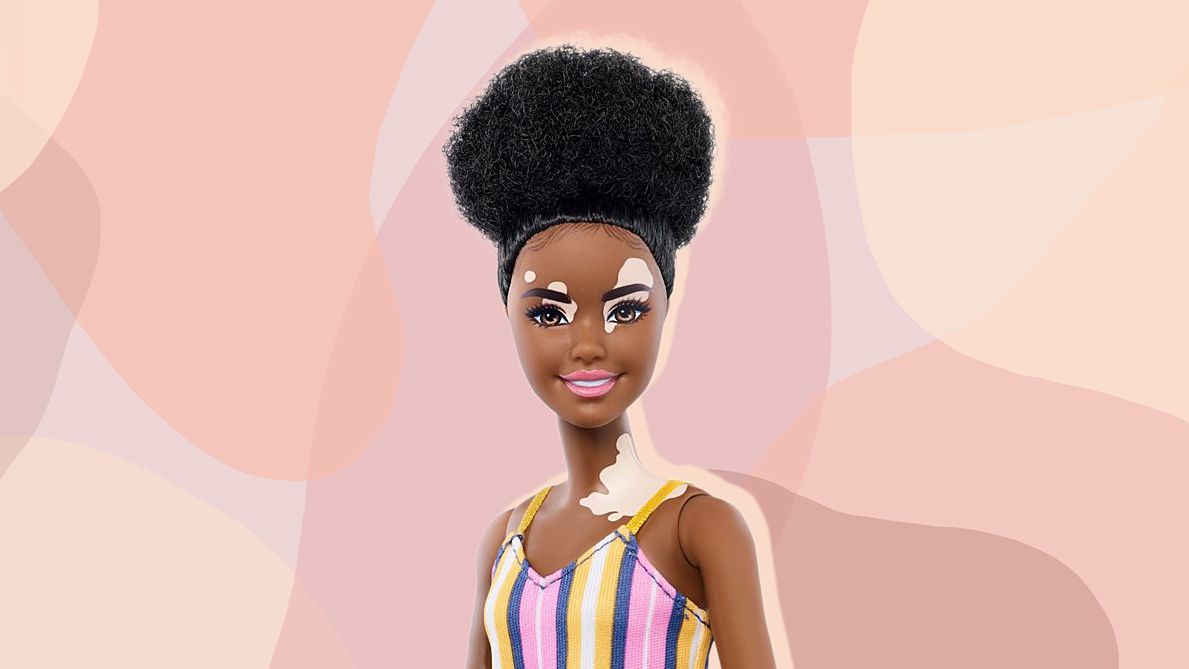Insight
Mattel Announces New Barbie With Vitiligo, A Common Skin Condition
Because representation matters.
The iconic world of Barbie, which has captivated the hearts and imaginations of generations, is making a monumental stride towards inclusivity and diversity with Mattel’s recent announcement of a new Barbie model featuring vitiligo. This autoimmune condition, characterized by the loss of pigmentation in certain areas of the skin, is often misunderstood and stigmatized. However, its representation in the Barbie universe marks a significant and meaningful step towards promoting acceptance and understanding of various health conditions and diverse appearances.
Barbie, an enduring symbol of beauty and fashion, has always held a special place in the lives of children and adults alike. Her evolution over the years reflects changing societal norms and values. Mattel, the company behind Barbie, has consistently sought to ensure that this beloved doll remains relevant and reflective of the world it inhabits.
The recent introduction of the vitiligo Barbie doll is part of a broader initiative known as Barbie Fashionistas. This initiative aims to create the “most diverse doll line,” as proudly proclaimed by Barbie’s official Twitter account. The tweet exclaims, “More skin tones! More body types! More diverse looks!” This marks a significant departure from the traditional image of Barbie, who for decades represented a single, often unattainable, standard of beauty. Barbie Fashionistas, on the other hand, embraces the richness of human diversity in all its forms.
Launched in 2020, the Barbie Fashionistas line is a testament to Barbie’s commitment to global diversity and inclusivity within the fashion doll landscape. This expansive collection boasts an astonishing array of options: 176 dolls, 9 distinctive body types, 34 diverse skin tones, and 94 unique hairstyles. The message is clear: beauty and identity come in a multitude of forms, and there is a Barbie for everyone.
In the case of the vitiligo Barbie doll, Mattel went to great lengths to ensure an accurate portrayal of the condition. The company collaborated with a dermatologist to meticulously capture the nuances of vitiligo. This level of attention to detail reflects Mattel’s commitment to authenticity and responsible representation. Mattel’s spokesperson emphasized that by introducing a Barbie with vitiligo into their primary doll lineup, they aim to empower children to recreate stories that mirror the rich tapestry of the world they observe around them.
Vitiligo, as explained by the Genetics Home Reference (GHR), a division of the National Institutes of Health, is a relatively prevalent autoimmune disorder, affecting up to one percent of the global population. This condition disrupts the function of melanocytes, the cells responsible for producing brown pigment. Despite extensive research, the exact cause of vitiligo remains elusive. While it is not a life-threatening condition, it can significantly impact one’s physical appearance and, consequently, their self-esteem.
One of the distinctive features of vitiligo is its unpredictability. Individuals with vitiligo cannot anticipate how extensively their bodies will be affected or the extent of pigment loss. Additionally, the visibility of vitiligo can be more pronounced in individuals with darker skin, underlining the importance of representation and awareness.
For those who develop vitiligo during childhood, the condition can intensify the complexity of self-discovery and body image. Regrettably, many individuals with vitiligo face bullying and social stigmatization due to their appearance. Consequently, the introduction of a vitiligo Barbie holds profound significance, as it not only enhances the sense of belonging for the vitiligo community but also educates society at large about the importance of embracing differences.
Barbie’s recent vitiligo doll is part of a broader initiative to champion diversity within the Barbie community. In the latest Fashionistas line, Mattel introduced a doll without hair, designed to inspire and empower girls facing hair loss due to medical reasons. This representation goes beyond aesthetics; it sends a powerful message that beauty transcends conventional standards and encourages self-acceptance.
Furthermore, Mattel has consistently pushed boundaries in recent years. They introduced a Barbie model that uses a wheelchair, promoting inclusivity for differently-abled individuals. Additionally, they unveiled a Barbie that wears a hijab, reflecting the cultural diversity of our global society. These progressive steps within the Barbie universe aim to foster an inclusive and empathetic world where every child can find a doll that resonates with their own unique experiences.
In conclusion, the introduction of a vitiligo Barbie represents a significant leap forward in the ongoing journey towards inclusivity, diversity, and acceptance. By offering a doll that authentically portrays this autoimmune condition, Mattel is not merely expanding its doll lineup but also promoting empathy, understanding, and self-assurance among children and adults alike.
This progressive step in the world of Barbie signifies a resounding commitment to celebrating the beauty of individuality and embracing the rich mosaic of human experiences. It reinforces the idea that there is no single standard of beauty, and that our differences, whether in appearance or background, are what make us unique and beautiful. Barbie, once a symbol of an unattainable ideal, is now a symbol of diversity, acceptance, and the celebration of our authentic selves. In doing so, Barbie sets a powerful example for the world, encouraging us all to embrace and celebrate our own uniqueness and that of others.

